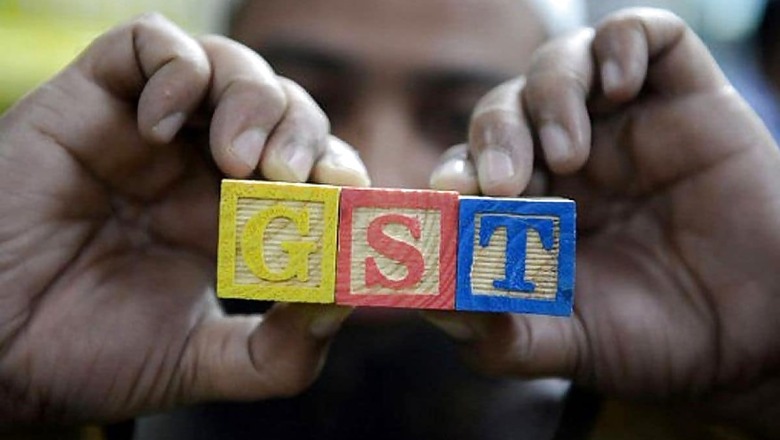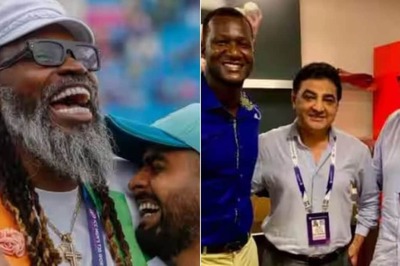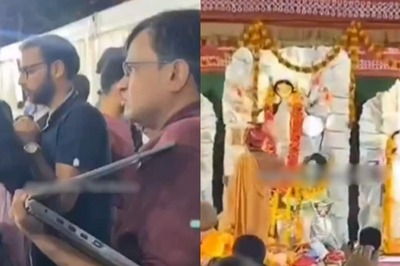
views
The inconclusive GST Council meeting, with repeated sparks between the Centre and Opposition-ruled states over the payment of compensation, sets a rather sad precedent. With the economy in a shambles, neither does the Centre have ready resources to pay the entire amount due as compensation to states nor are some states ready to make additional borrowings and make good the shortfall against future compensation. Both sides need to climb down from their stated positions. According to finance minister Nirmala Sitharaman, 20 state governments have agreed to borrow and make up the compensation shortfall through one of the two options earlier provided by the Centre. But nearly 10 other states – Opposition-ruled, including Kerala and Punjab – are insisting that the Centre does the additional borrowing to pay full compensation. The GST Council is slated to meet again next week to deliberate on the stand taken by these Opposition-ruled states.
LIVE shortly: Press conference by Finance Minister @nsitharaman, on outcome of 42nd @GST_Council meetingWatch????https://t.co/LOBhlgUN91
Stand by for LIVE updates pic.twitter.com/jyBqZOMhKf
— PIB in Maharashtra ???????? (@PIBMumbai) October 5, 2020
The logical question is this: if 20 state governments have agreed to borrow now and make good the shortfall, are the remaining 10 states justified in their intransigence? Madan Sabnavis, chief economist at CARE Ratings, pointed out that “while it is true that state governments’ borrowing will be at higher cost compared to the Centre, servicing of this additional debt will be done from the compensation fund at a later date. It will reflect on the state governments’ books for this fiscal but since servicing is not being done by state governments themselves, it should not be an issue”. Typically, state governments are charged 50-60 basis points (0.5-0.6%) higher interest rate than the Centre.
Politics should not trump economics, especially in the present scenario, where the states and the Centre are equally hard up, with normal revenue channels drying up for both. Ratings agency ICRA has noted that central revenue receipts contracted by 38.6% or by more than a third to Rs 3.7 lakh crore between April-August. Gross tax revenue contracted by 23.7% or by a fourth to Rs 5 lakh crore: direct tax collection fell by a third while indirect taxes were down by about 15%. While revenue was contracting, expenditure by the Centre rose by 7.1% to Rs 11.1 lakh crore due to higher spending on healthcare, rural jobs scheme MGNREGA and agriculture (front-loaded payments under PM-KISAN). Given the revenue shock, the country’s fiscal deficit has already breached its budgeted target at Rs 8.7 lakh crore.
It’s not like that the states are not in a fiscal hole themselves. An analysis by the State Bank of India (SBI) found that revenue collection for states has fallen by around a third (combined SGST, allocated IGST and cess down 33%) while their indebtedness has risen due to the pandemic. Between April-September, state governments’ combined borrowings had risen by about 50% over the same six-month period of the previous fiscal. Higher market borrowings show rising stress on states’ finances.
10 states demand that full compensation should be paid to the states during the current year as per clauses in the law and centre should borrow. Decision was postponed to the next meeting on 12th of October.— Thomas Isaac (@drthomasisaac) October 5, 2020
Kerala’s finance minister Thomas Isaac tweeted after the council’s meeting that “10 states demand that full compensation should be paid to the states during the current year as per clauses in the law and centre should borrow. Decision was postponed to the next meeting on 12th of October.”
The Centre has already relaxed the borrowing limit for states, giving extra resources of Rs 4.28 lakh crore. Besides, it has already released GST compensation for FY20 at Rs 1.65 lakh crore, which required it to use the balance of cess amount collected during FY18 and FY19. So the Centre has no cushion any longer to bear the additional burden imposed by the pandemic.
Sachin Menon, partner and national head (indirect tax) at KPMG, said, “Their (10 states’) demand that the Centre compensate them fully is unrealistic. Had GST not been introduced, are they trying to say that then there would have been no drop in tax revenues during Covid for them? The Centre’s plea to compensate the differential through two borrowing options looks very reasonable.”
Besides the continued disagreement over who would foot the bill for compensation payment, the other significant decision from the GST Council meeting on Monday was an extension of the compensation cess on certain products beyond 2022. This means one will have to continue to pay more to have a soft drink or buy a car. The cess was to lapse in 2022 and is applicable to coal, pan masala and tobacco besides aerated drinks and automobiles.
GST is a single indirect tax with multiple slabs for the entire country; it subsumed central indirect taxes such as excise and customs tax and state-level levies such as value added tax, sales tax, octroi and luxury tax, etc. Some product categories were kept outside its purview (alcoholic goods, petroleum products). All goods and services are divided into tax slabs and five categories of goods – aerated drinks, pan masala, tobacco, automobiles and coal – attract an additional cess. The cess collected from the sale of these products is used to compensate states for revenue loss. At the time of GST rollout in July 2017, the Centre had assured all states that it will fully compensate them from any losses arising due to the transition to GST for the next five years or till 2022. The compensation payable by the Centre is the projected revenue (at a compound growth rate of 14% from the base figure of 2015-16) of states for each year till 2022, minus the actual revenue.
This year, the Centre said that due to Covid-19 and resultant lull in economic activities, there has been a steep decline in overall GST collections. The expected shortfall in 2020-21 could be nearly Rs 3 lakh crore. The collection from the compensation cess has been estimated at a little less than Rs 70,000 crore this fiscal, leaving a gaping hole of Rs 2.3 lakh crore. This is the sum over which the Centre and the states are engaged in a tug of war. In the last GST Council meeting, the Centre had put two options on the table.
First option: the shortfall arising out of GST implementation, estimated at Rs 1.1 lakh crore, be borrowed by states through issue of debt under a special window coordinated by the ministry of finance. This Rs 1.1 lakh crore is the estimated shortfall due to just implementation of GST and without the impact of the pandemic. The interest on these borrowings will be paid from the cess until the end of the transition period. After the transition period, principal and interest will also be paid from proceeds of the cess, by extending the cess beyond the transition period. State governments will not be required to service the debt or to repay it from any other source. Second option: the entire shortfall of Rs 2.35 lakh crore (including the Covid-impacted portion) may be borrowed by states through issue of market debt. The Centre will repay the principal on such debt from future cess proceeds. But the state governments will have to bear the burden of interest on such loans.
Most states have chosen the first option for making the necessary additional borrowings. The remaining may also be left with little choice but to follow these 20 leader states.



















Comments
0 comment